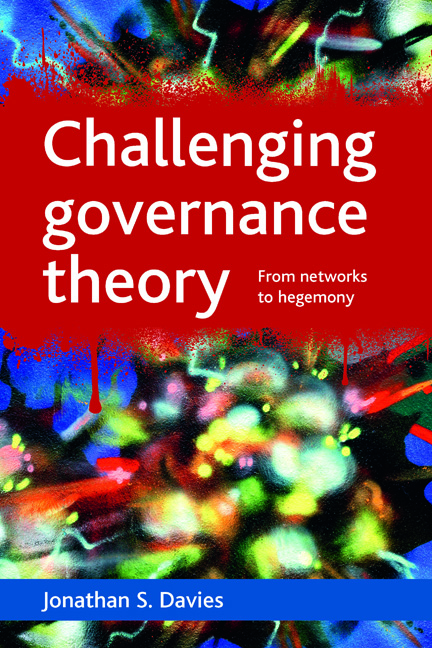Book contents
- Frontmatter
- Dedication
- Contents
- List of tables
- Preface
- Introduction
- one The network governance milieu
- two Network governance policy
- three The limits of network governance
- four Beyond the transformation thesis
- five From network governance to hegemony
- six Gramscian governance research
- seven Conclusion
- References
Introduction
Published online by Cambridge University Press: 07 September 2022
- Frontmatter
- Dedication
- Contents
- List of tables
- Preface
- Introduction
- one The network governance milieu
- two Network governance policy
- three The limits of network governance
- four Beyond the transformation thesis
- five From network governance to hegemony
- six Gramscian governance research
- seven Conclusion
- References
Summary
For a generation, scholars, politicians, officials, activists and public intellectuals have celebrated the transformative potential of networks across government, economy and society. The network is the leitmotif of postmodernist social science, encompassing everything from radical anti-foundationalism to neo-Marxism and everyday theories of governance, public administration and public policy. Network analysis is applied to a vast range of social phenomena, inter alia to describe, model, analyse, explain and justify them. From the radical left to the libertarian right, scholars celebrate networks alongside their antagonists in mainstream public administration and policy. International corporate elites depict themselves and their companies as networked and networking as the medium of innovation in the age of informational or knowledge capitalism (Boltanski and Chiapello, 2005a). Across much of the world, from the UK and the US to mainland Europe, Scandinavia, Mexico, South Africa and the Antipodes, and at every geopolitical scale from the neighbourhood to the global, networking is proselytised as the way to conduct governance, intergovernmental relations, management and relations between government and civil society – and indeed as the best way to organise resistance. In short ‘the metaphor of the network has progressively taken responsibility for a new general representation of societies’ (Boltanski and Chiapello, 2005a, p 138). It has become ‘a common form that tends to define our ways of understanding the world and acting in it’ and the ‘tendency of this common form to emerge and exert its hegemony is what defines the period’ (Hardt and Negri, 2004, p 142). Zeldin's (1994, p 488) paean to the network epitomises the celebratory mood:
I see humanity as a family that has hardly met. I see the meeting of people, bodies, thoughts, emotions or actions as the start of most change. Each link created by a meeting is like a filament, which, if they were all visible, would make the world look as though it is covered with gossamer. Every individual is connected to others, loosely or closely, by a unique combination of filaments, which stretch across the frontiers of space and time.
Even the mundane pursuit of joined-up government is imbued with the ‘almost spiritual’ nature of a quest for ‘connexity’ or ‘holism’ (Pollitt, 2003, p 36), the sense that networking is a new and potentially redemptive form of sociability in a world sundered by de-traditionalisation, globalisation and the rise of the ‘me generation’ (Milburn, 2006).
Information
- Type
- Chapter
- Information
- Challenging Governance TheoryFrom Networks to Hegemony, pp. 1 - 8Publisher: Bristol University PressPrint publication year: 2011
